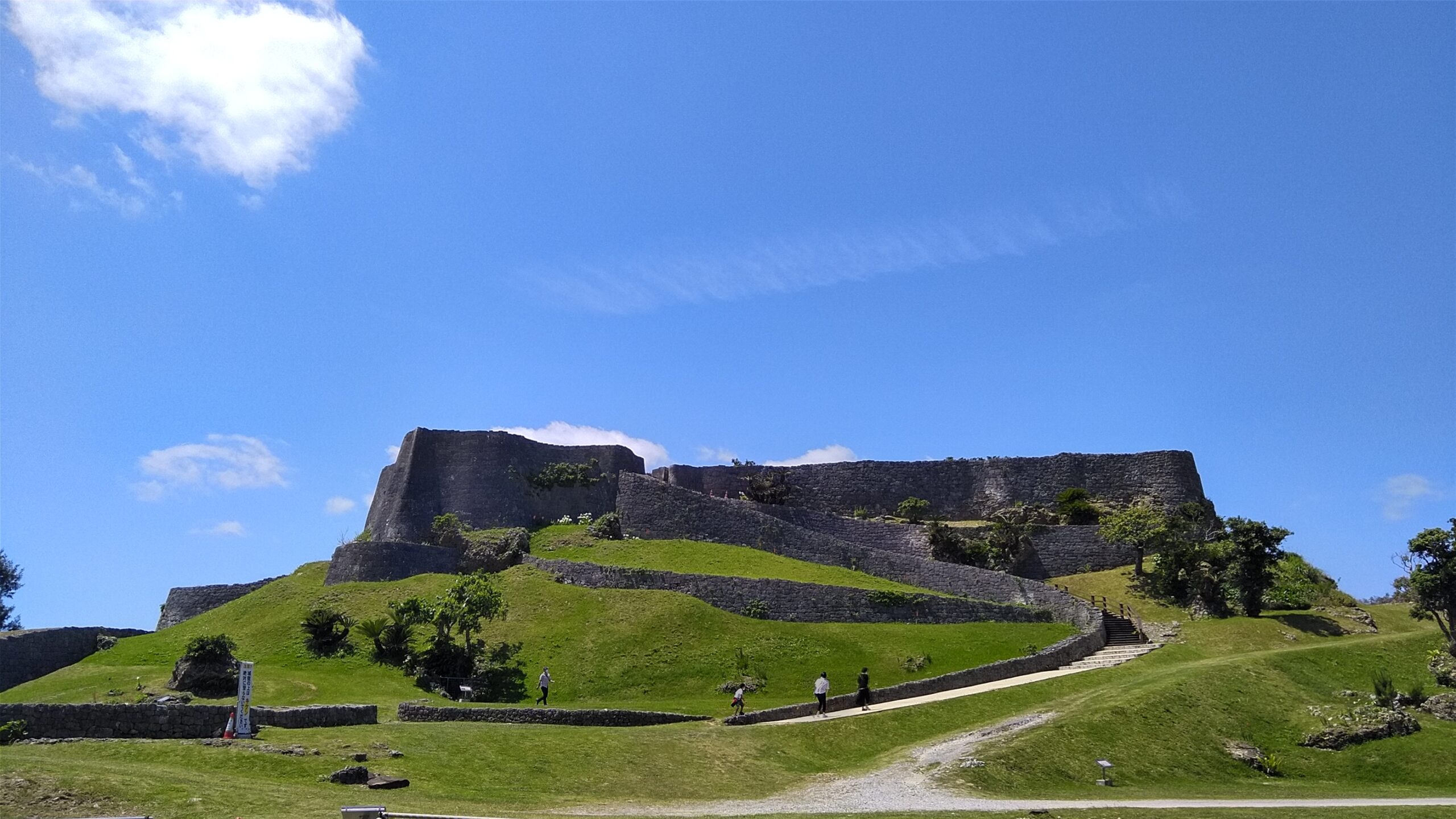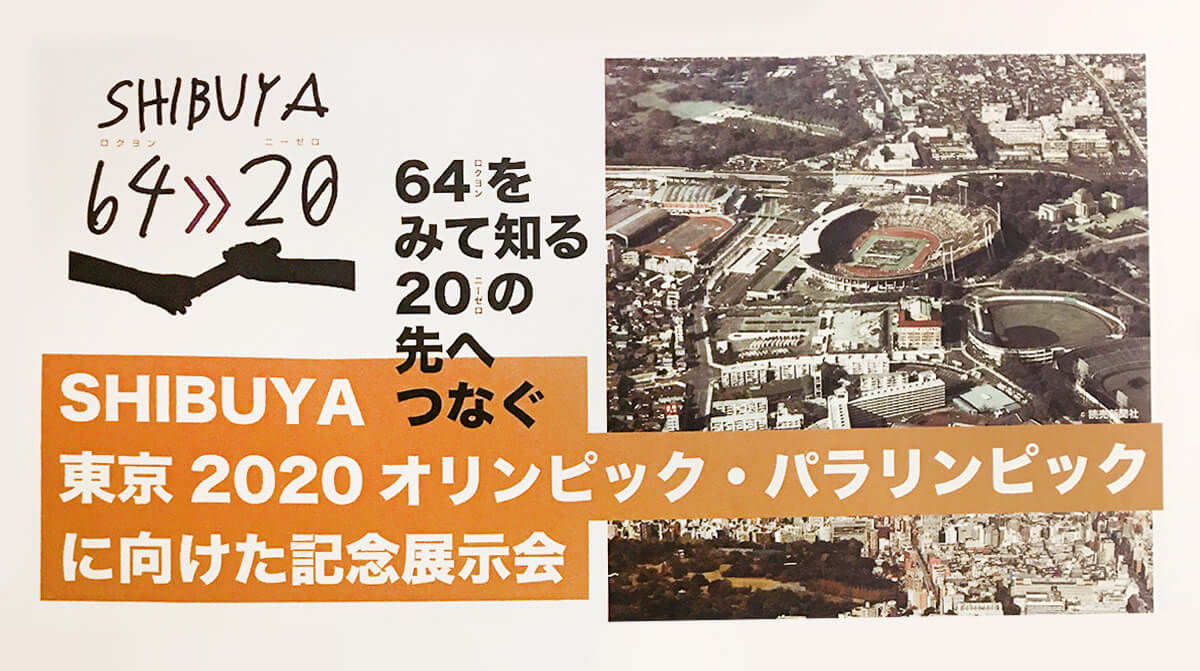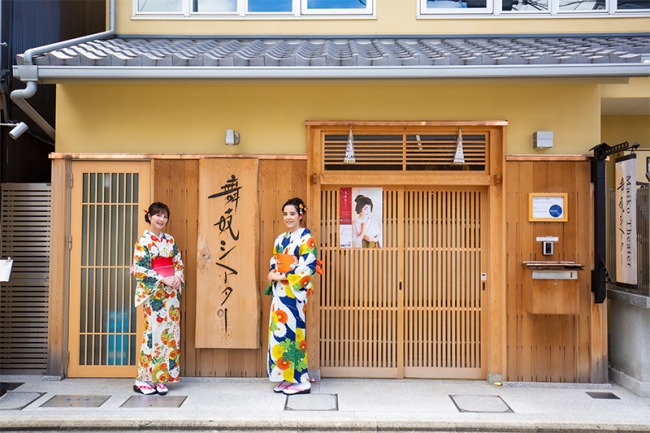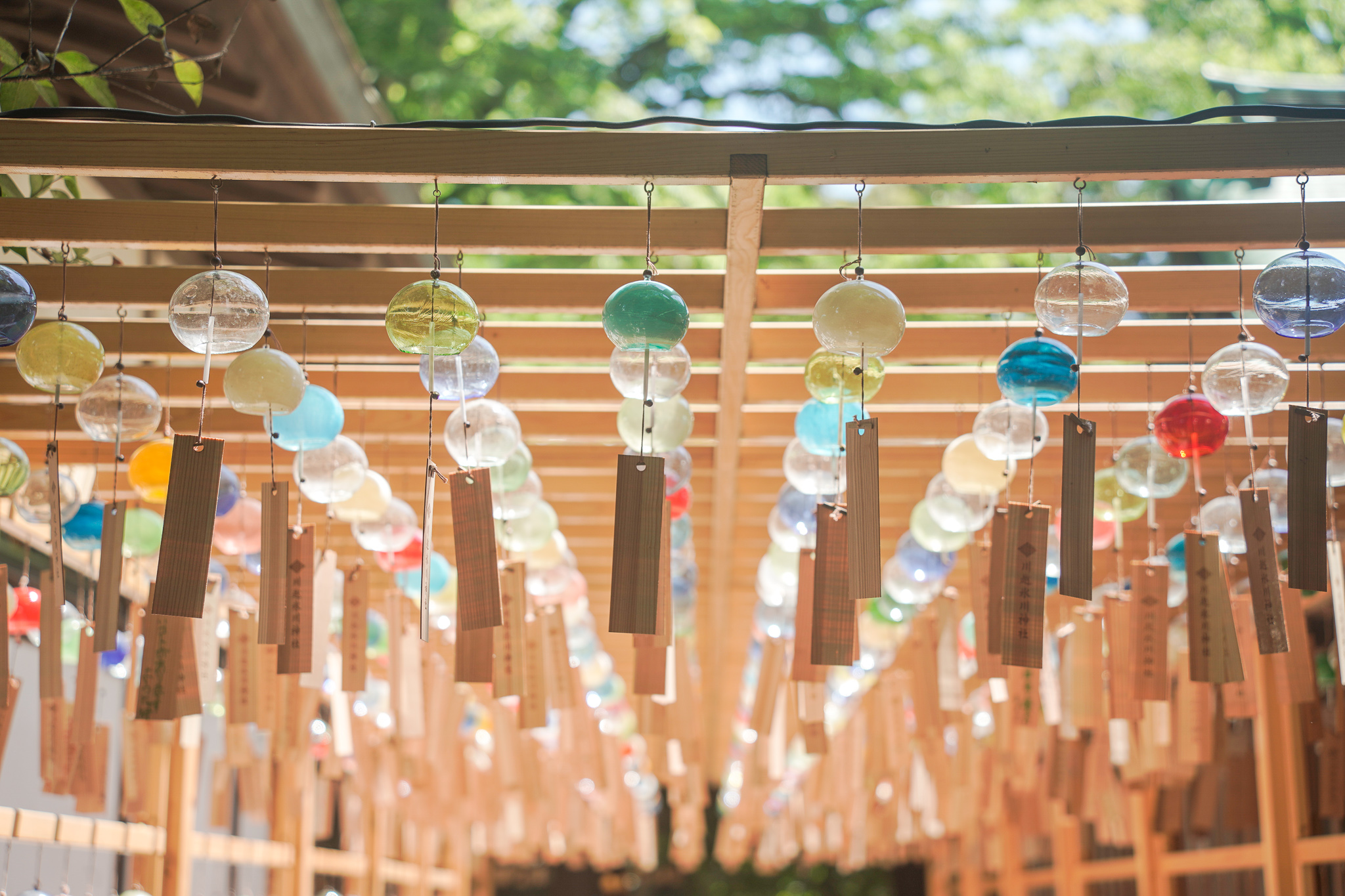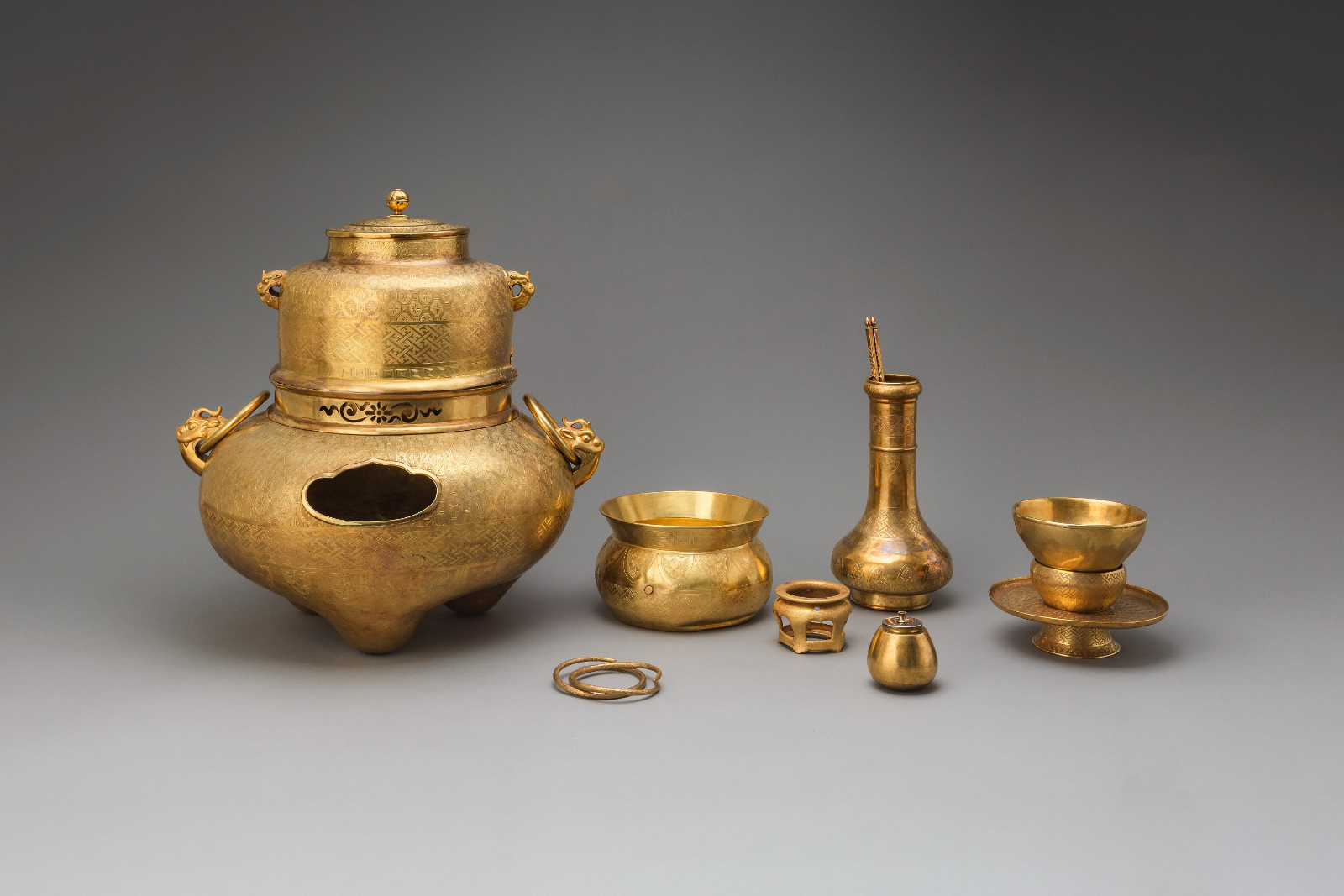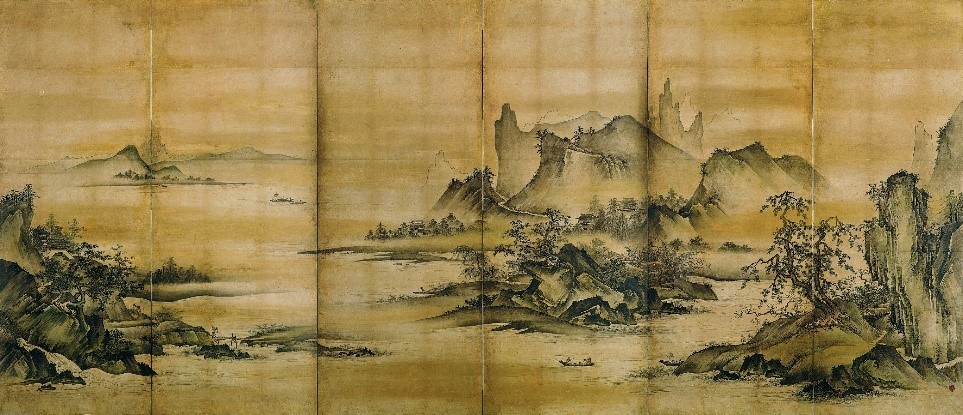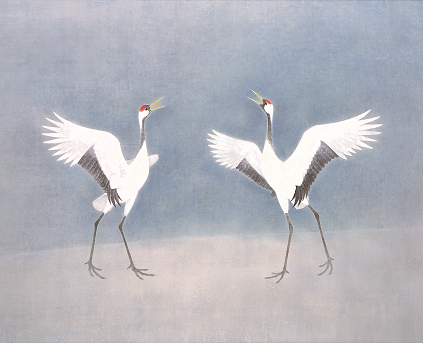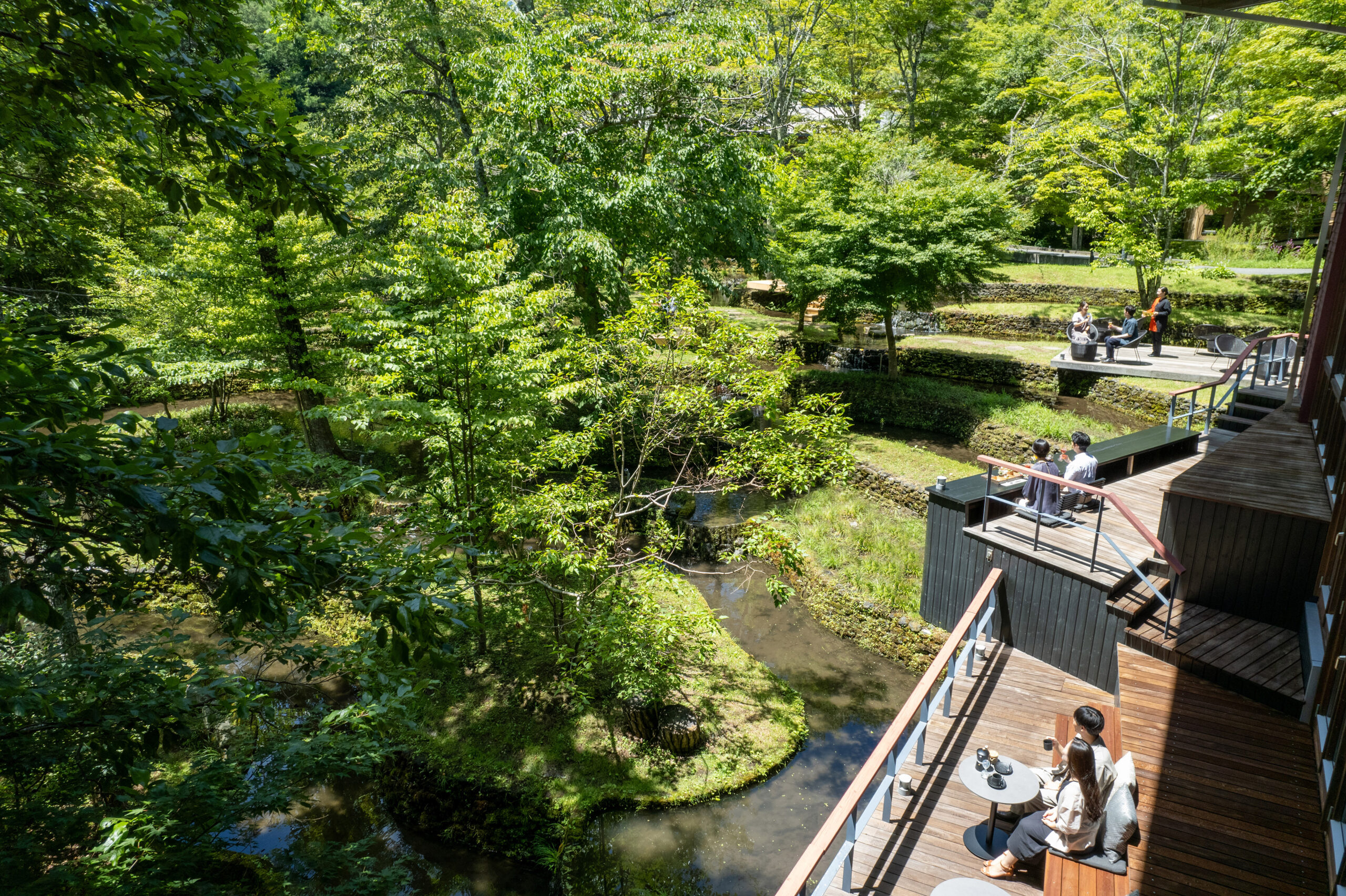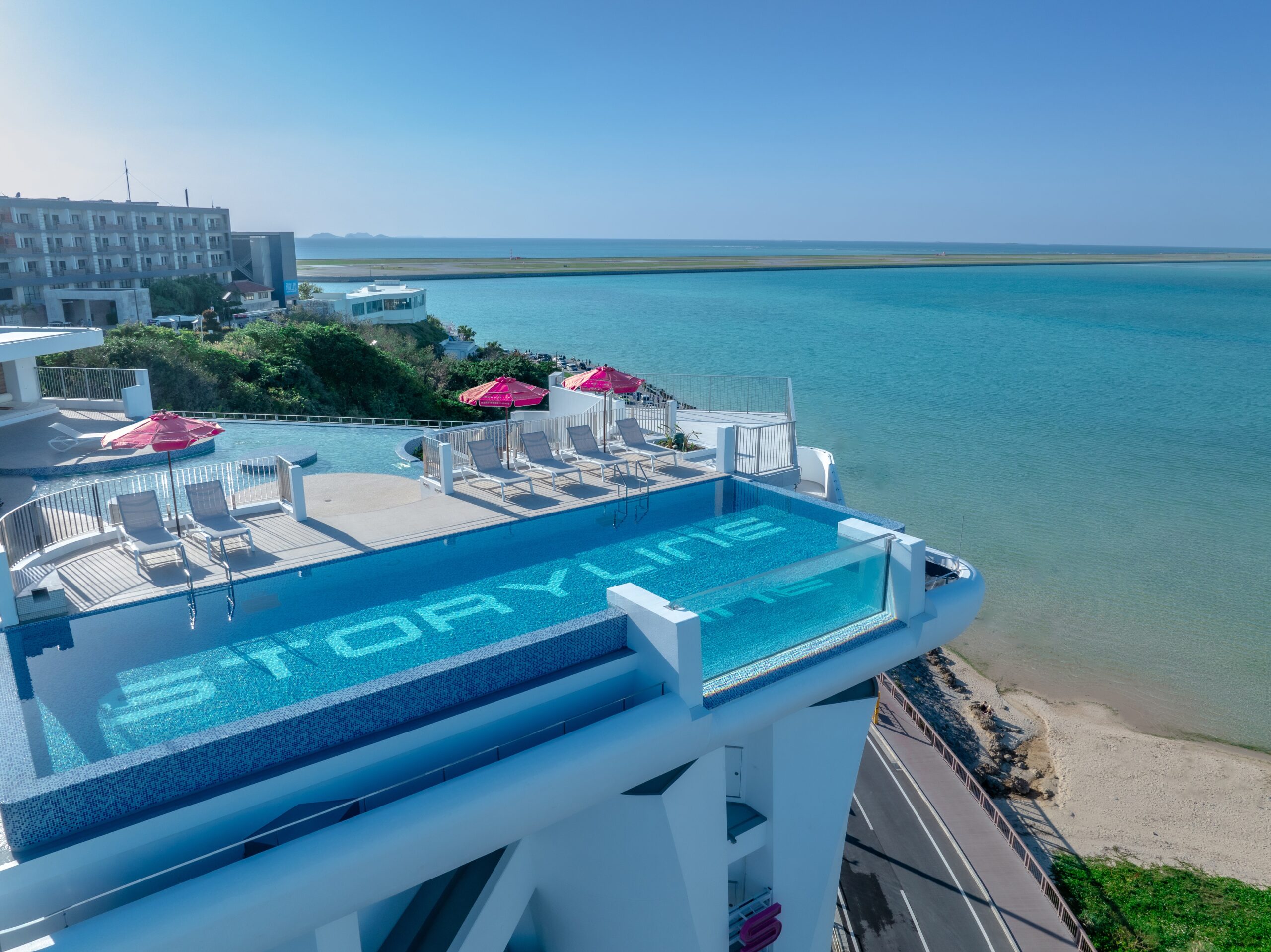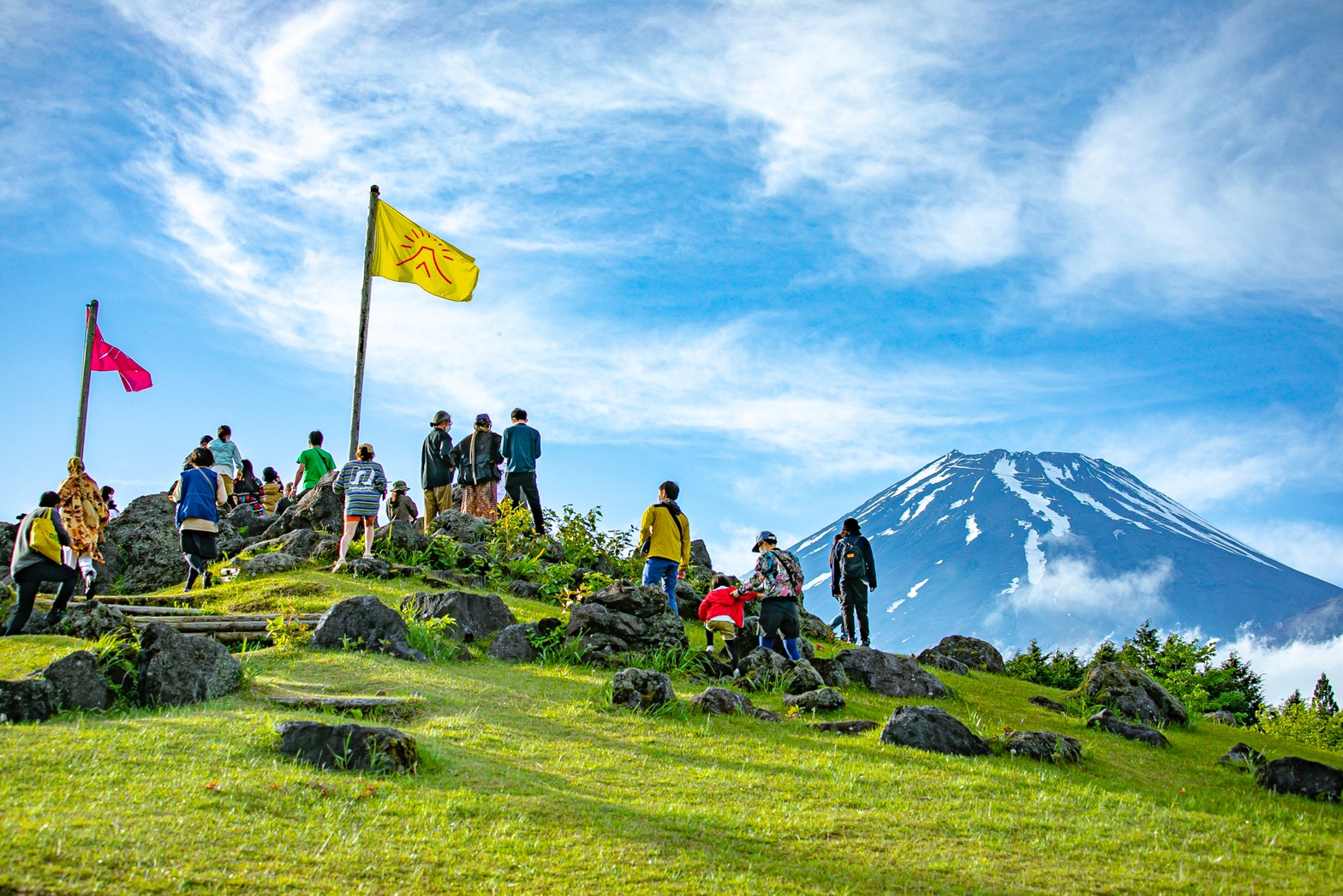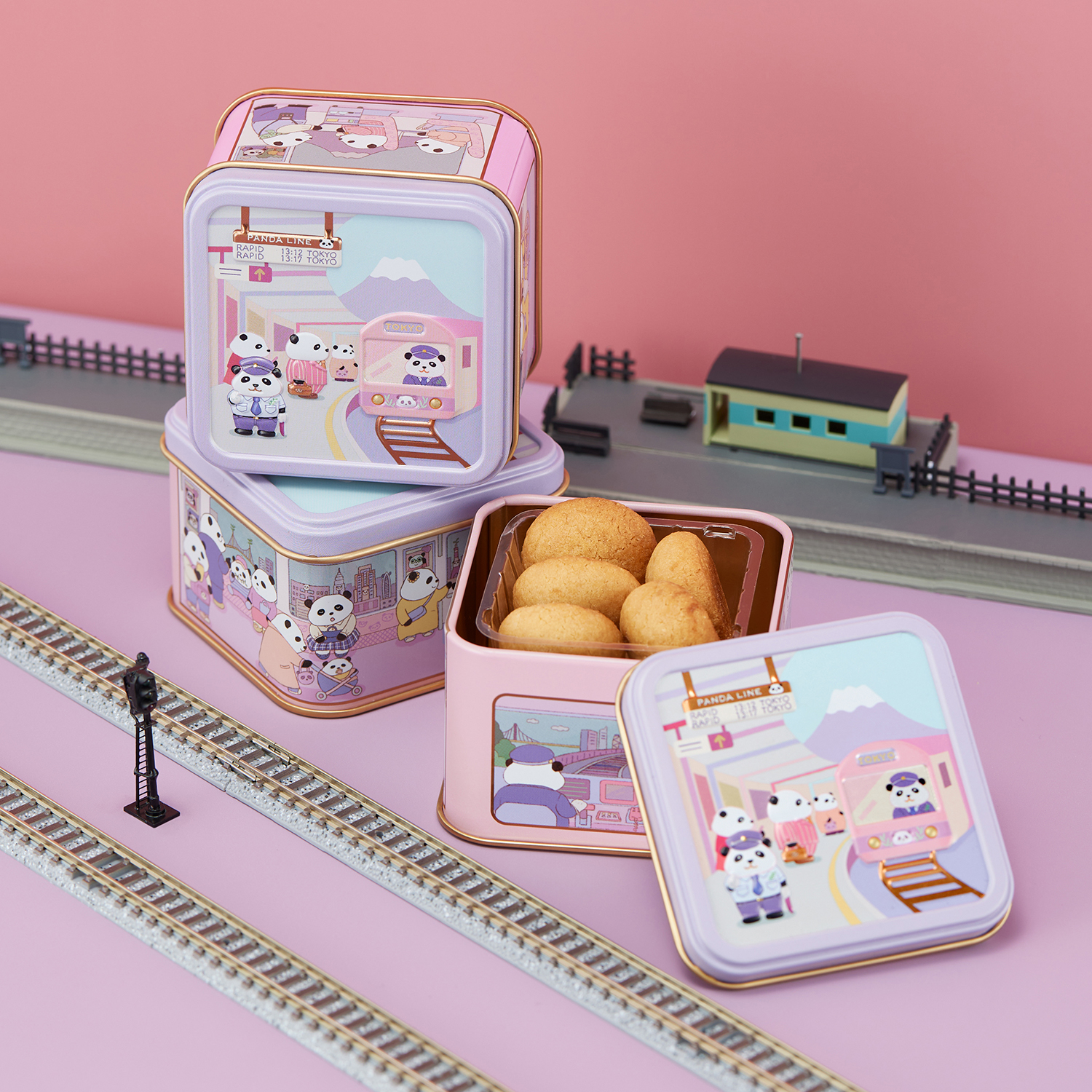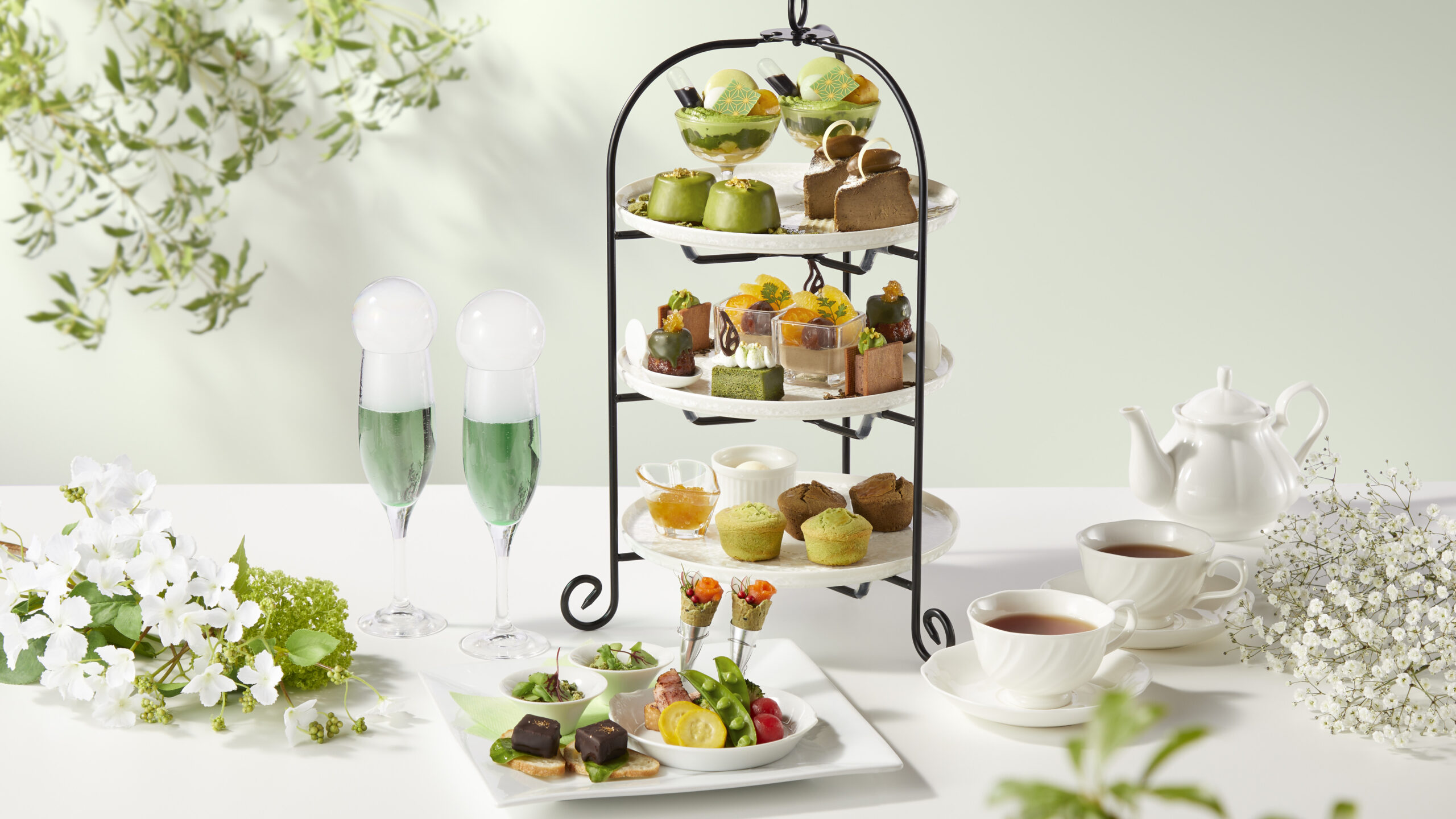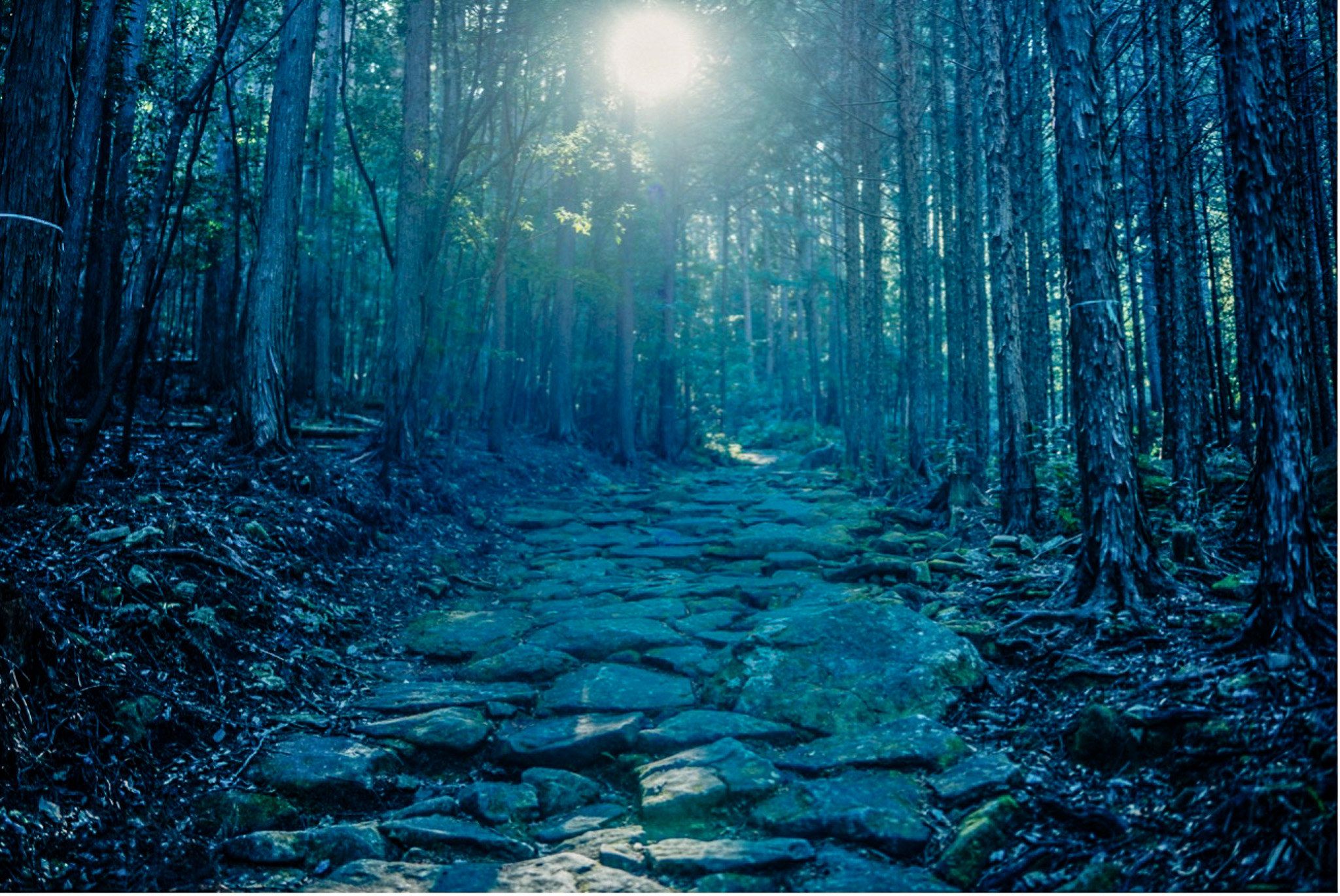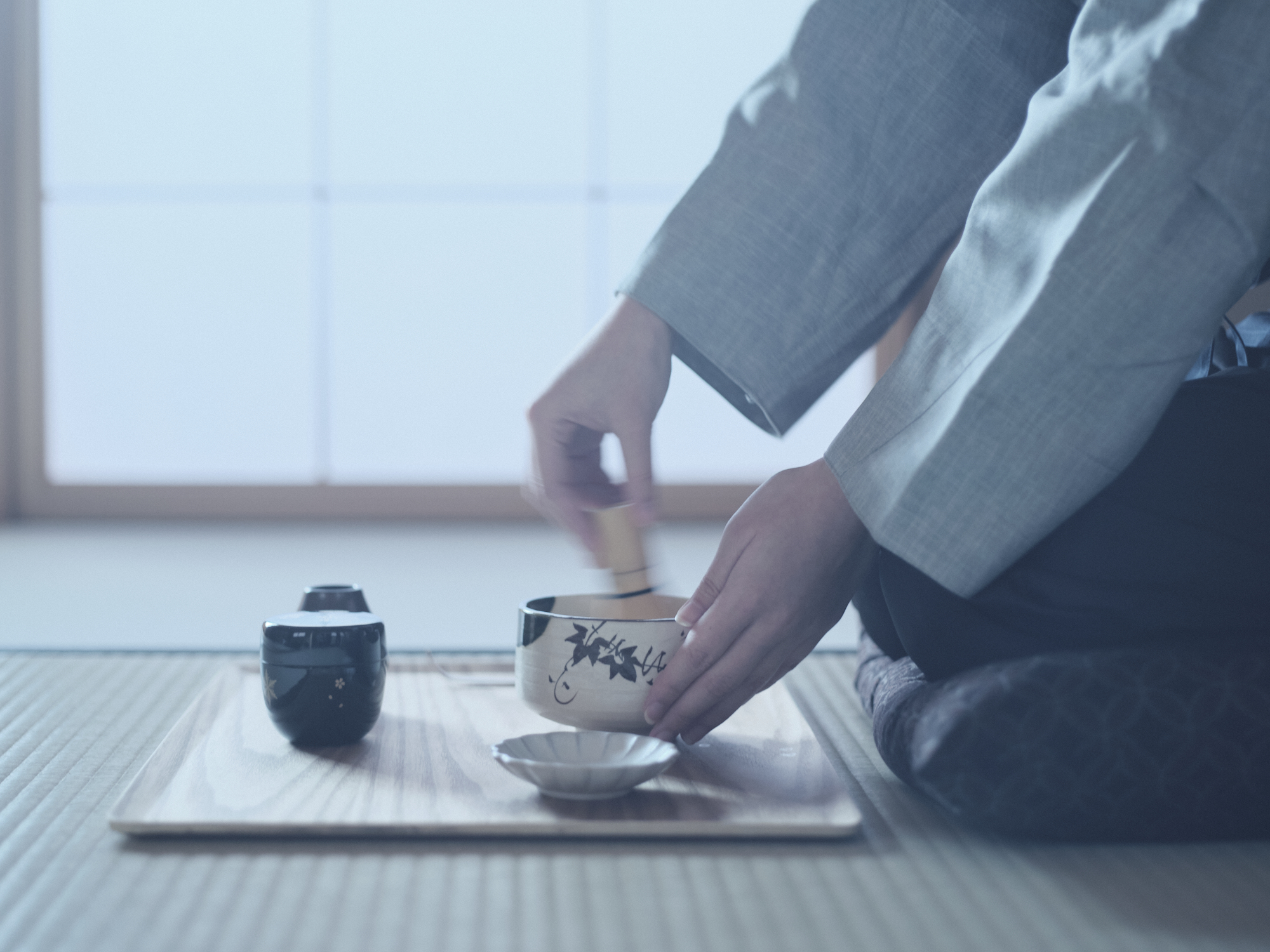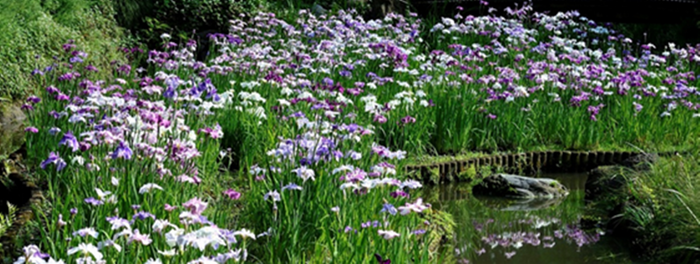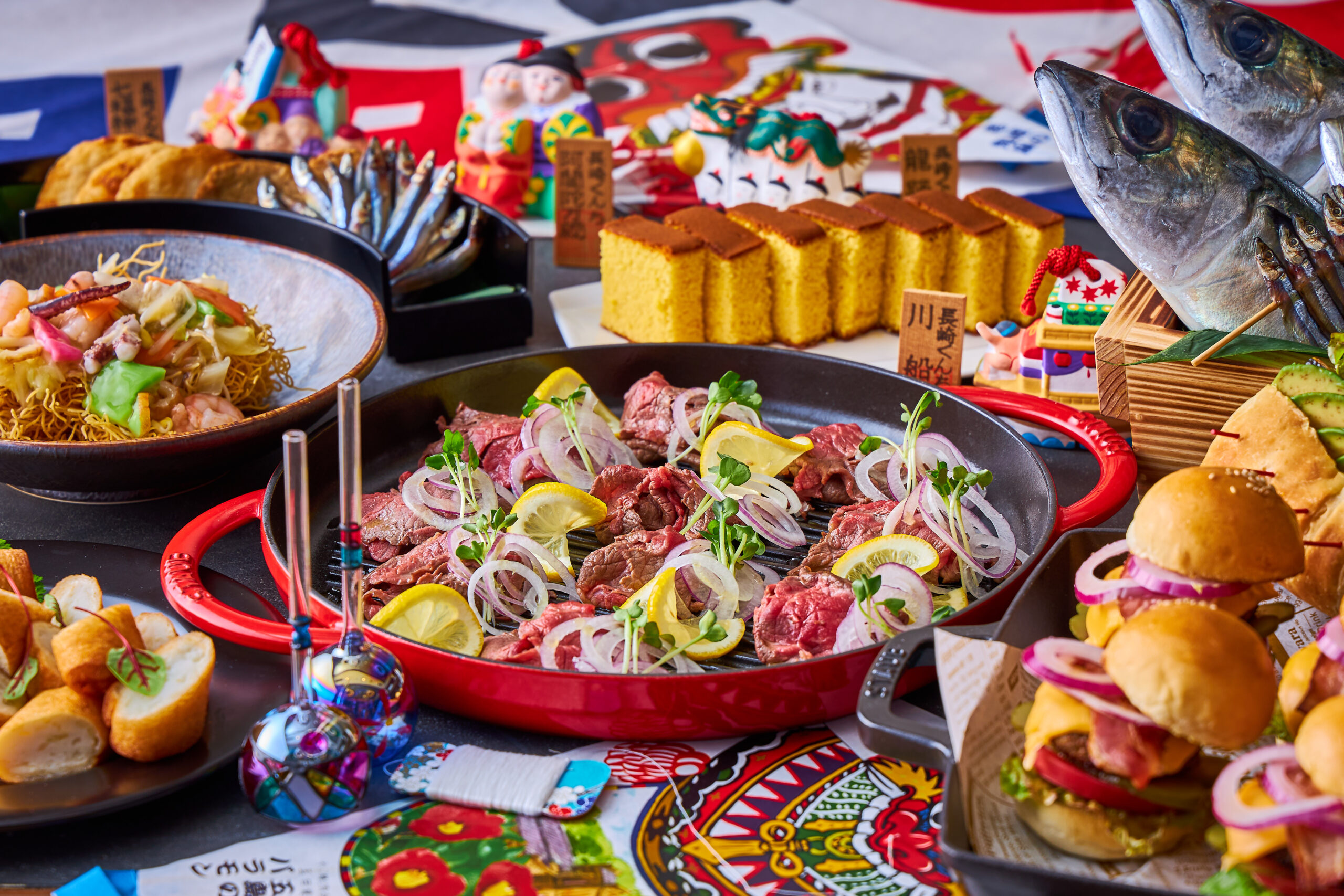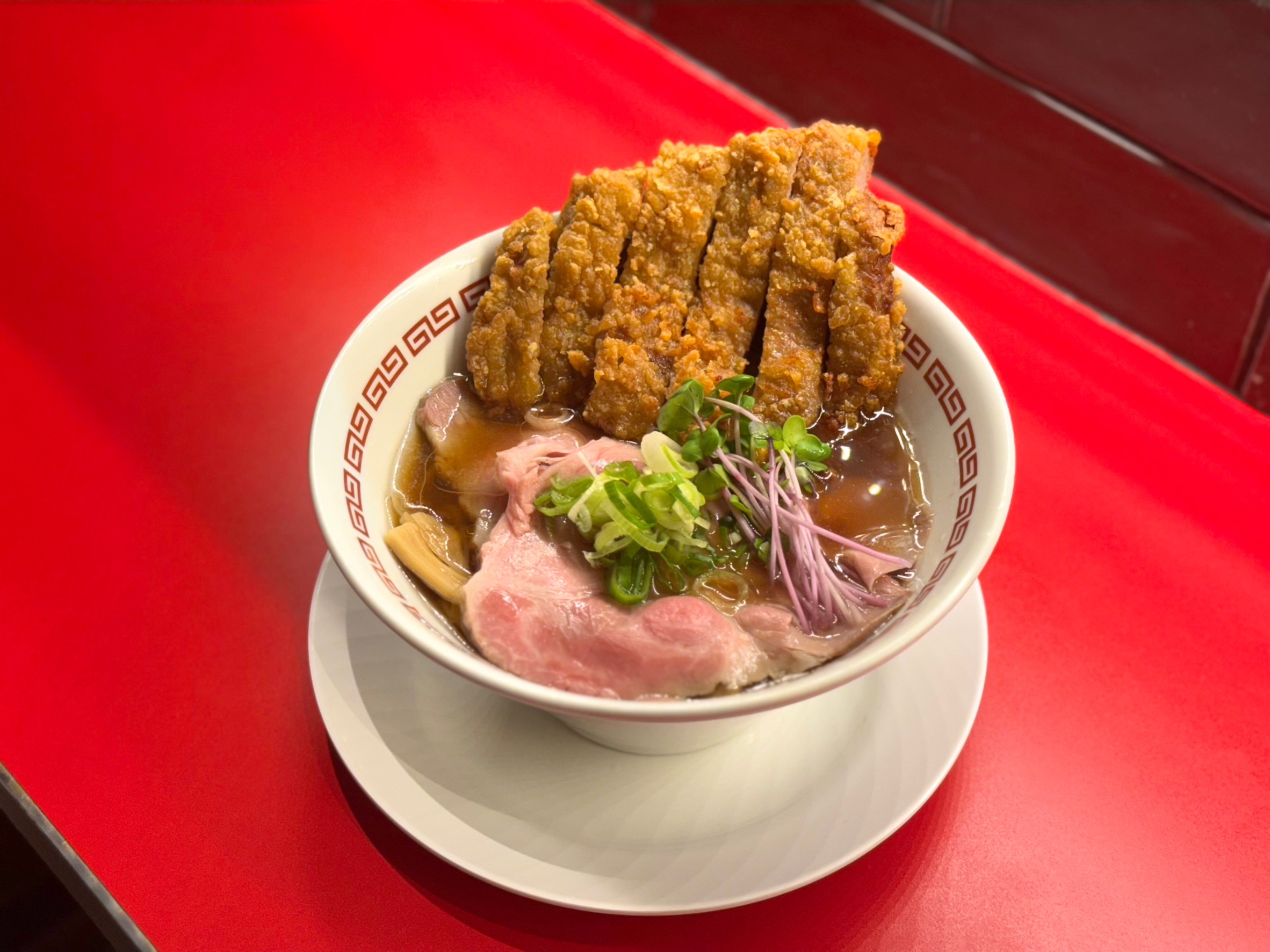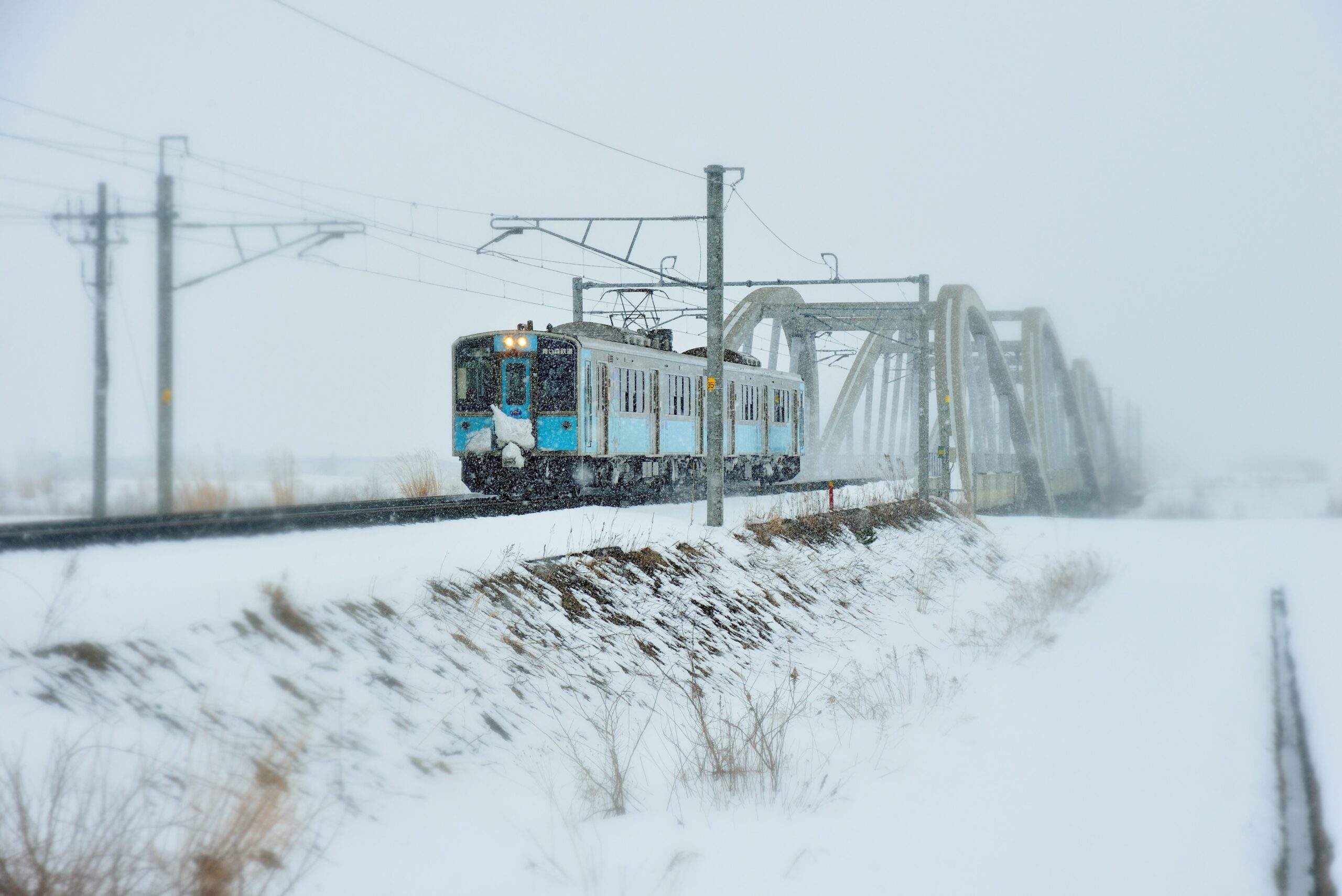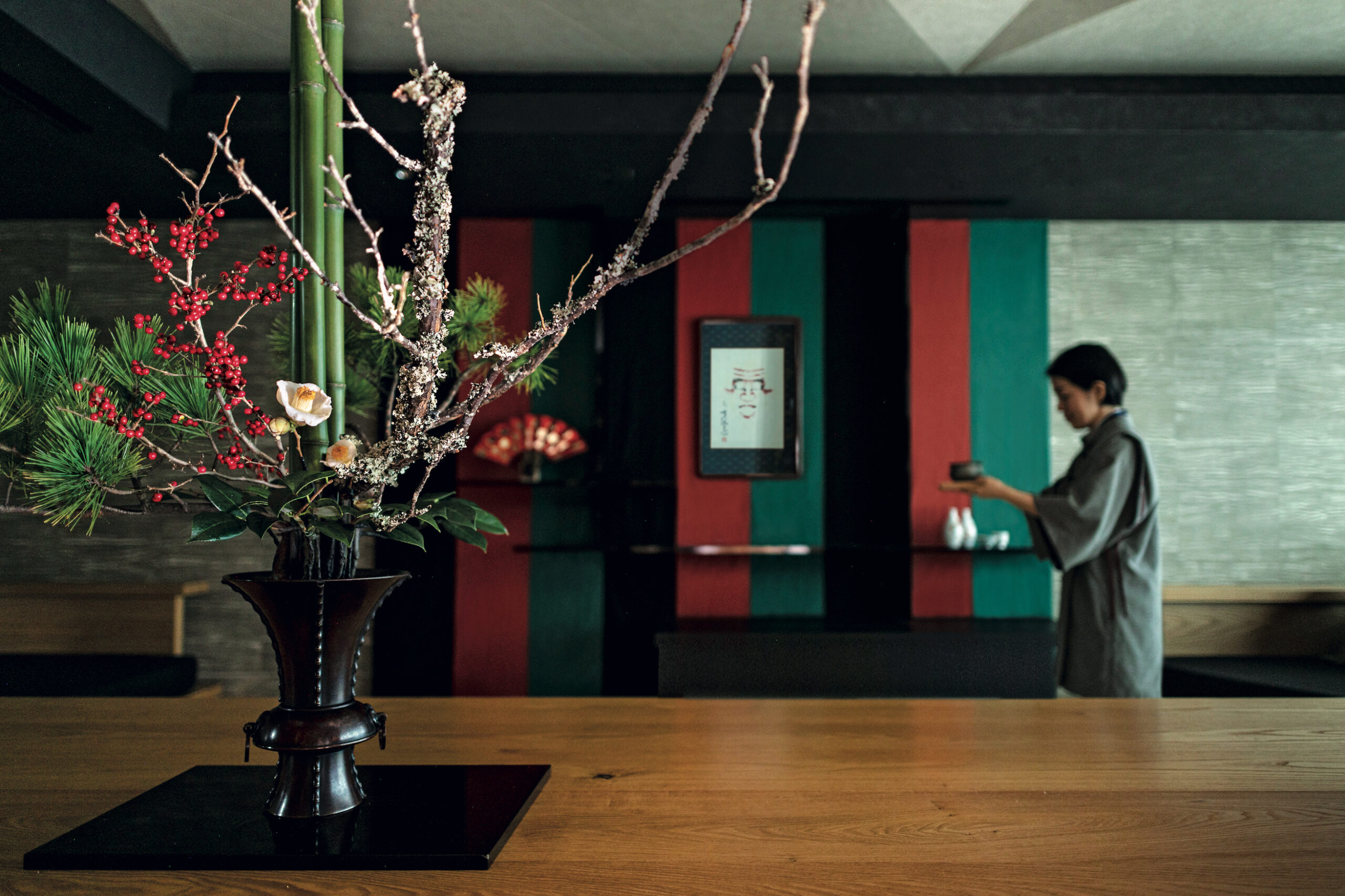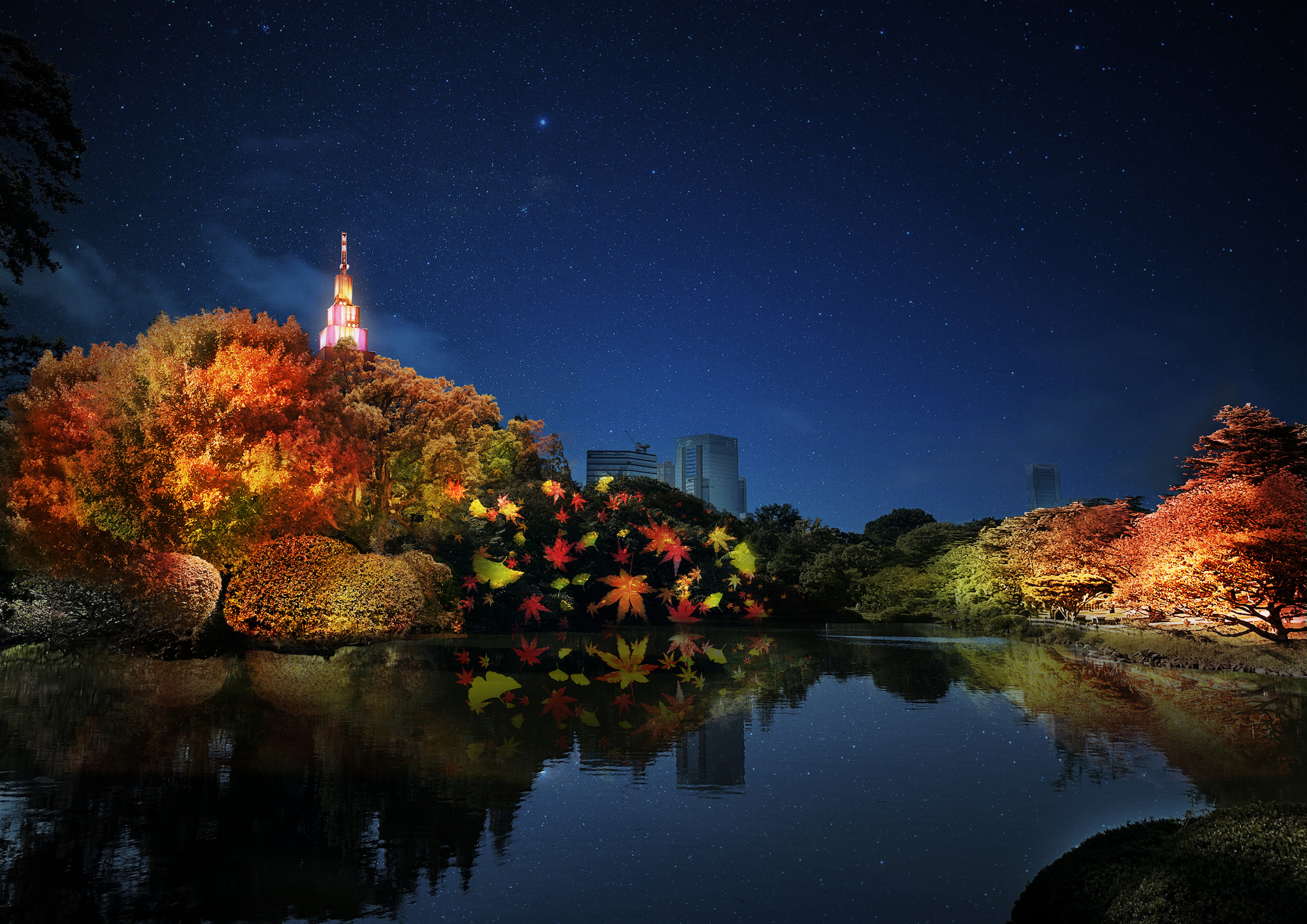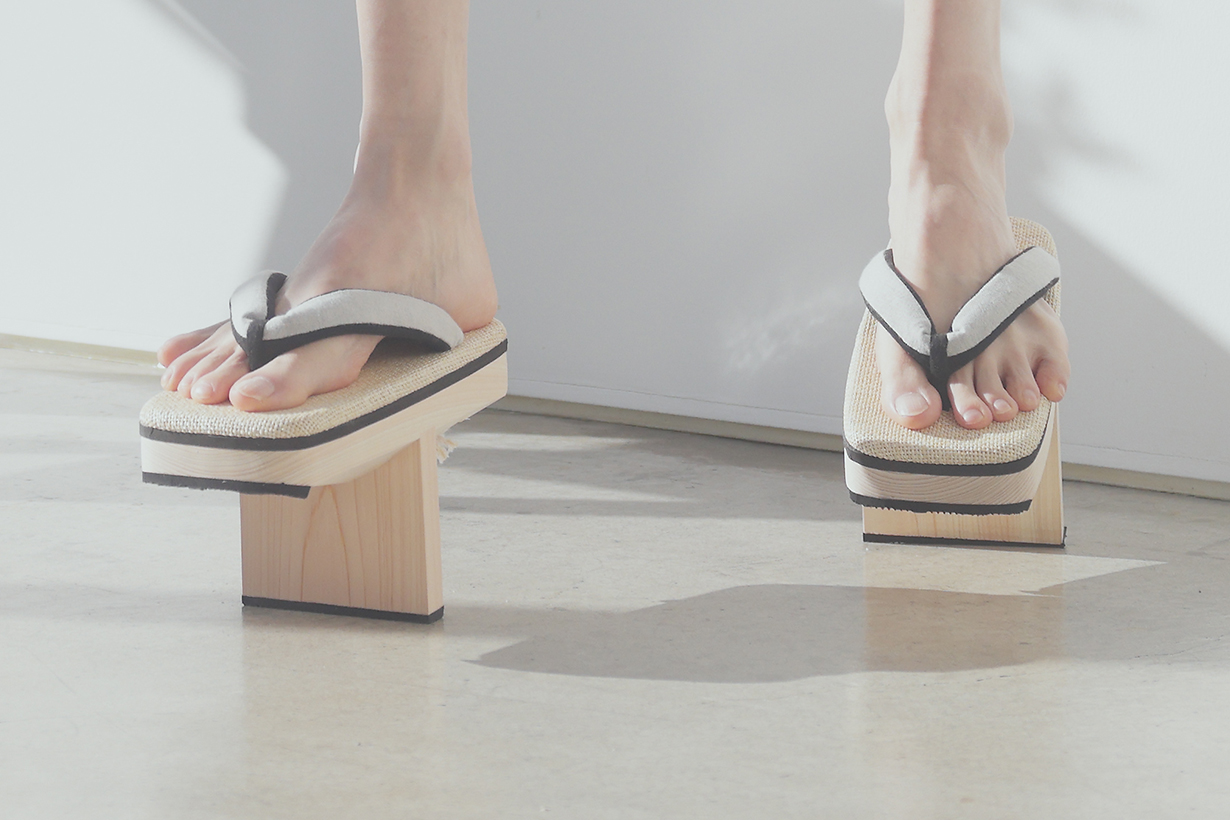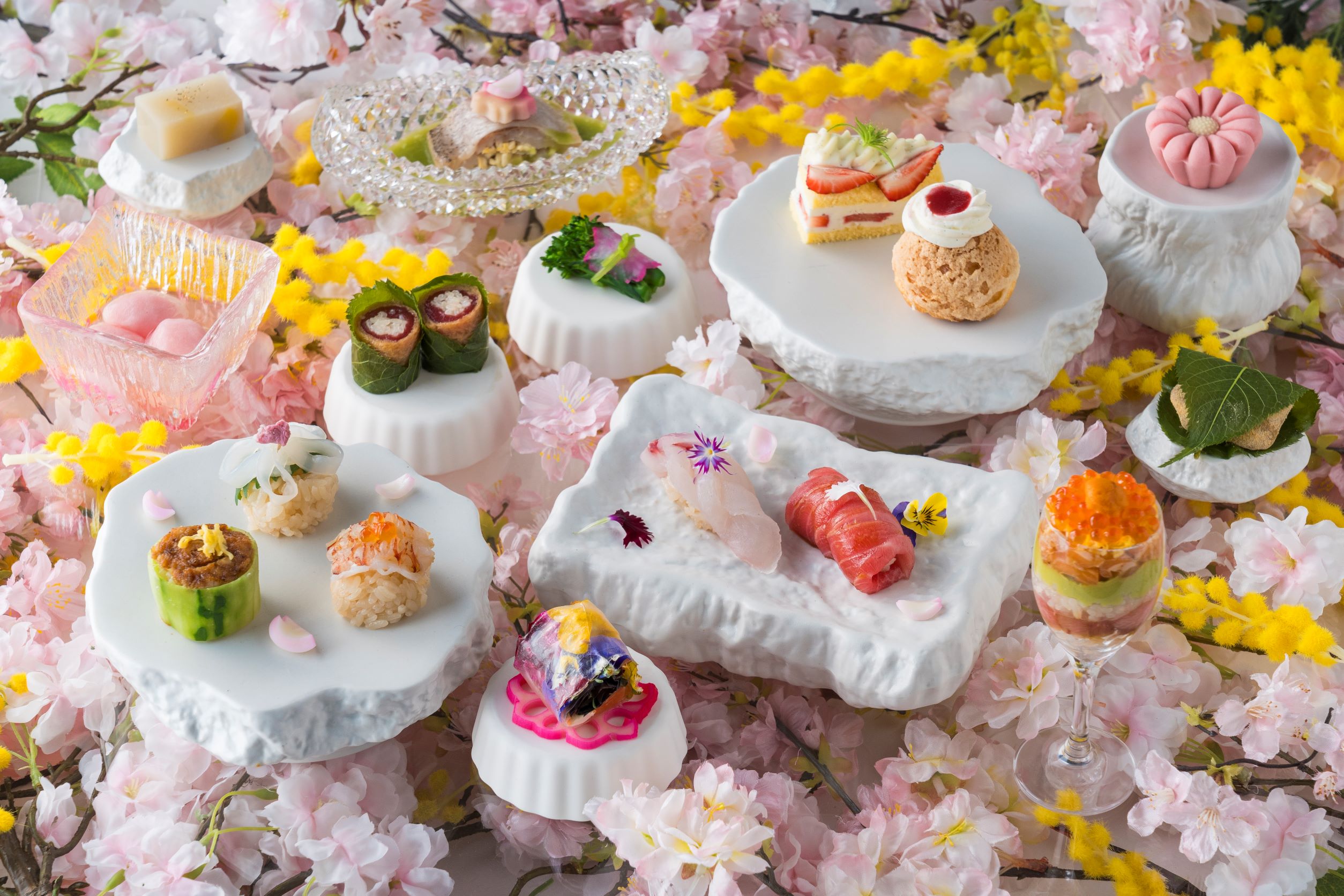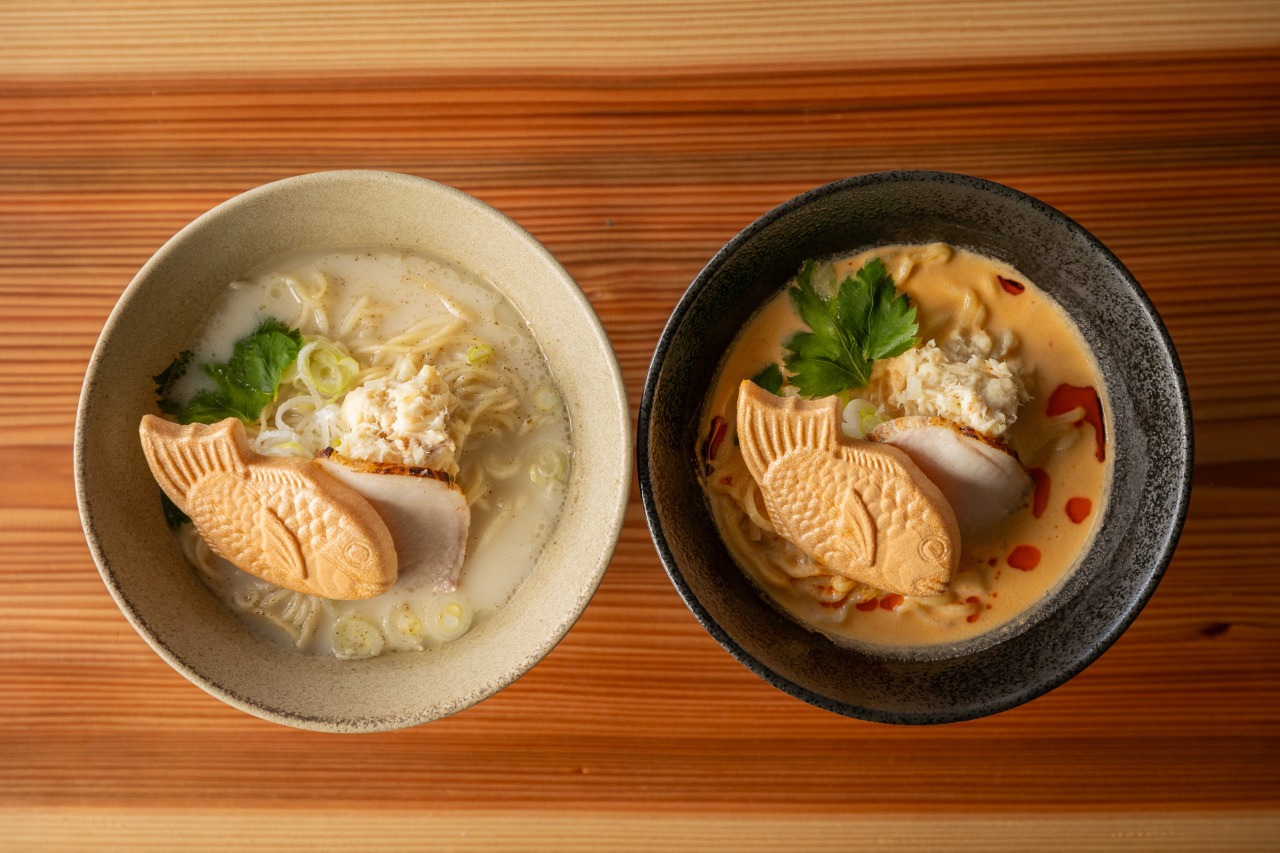To the place that brought the connection with Izumo

-I heard that this is a very meaningful place for Ms. Komatsu.
It’s the Hotel New Welcity Izumo. This is the place where I drew my work in Izumo using acrylic for the first time. A person who has a connection with this hotel is a fan of my work, and I drew a painting related to “神在月(Kamiarizuki)”. The works I drew in November 2019 are exhibited here.

-Your work is on display in the back of this restaurant, isn’t it?
Yes, it is. There is a painting exhibition space in the restaurant “Kunibiki” in the hotel. You can see the exhibition even while having lunch, so please stop by and take a look. I have dedicated the paintings to the land of Izumo, I have so many connections here in Izumo and I am sincerely grateful for that.
The work that inspired me to draw the mountain dog (Yamainu sama)

-It’s a very energetic work. Both paintings and Sculptue works are on display.
A sculpture work of Yamainu sama based on the mountain dog (Japanese wolf) is also exhibited. On top of that, you can see what looks like a dragon is *御神使(Go-shin-shi) of Izumo Taisha, also called 龍蛇神(Ryu-ja-shin).
*御神使(Go-shin-shi) : A messenger of God in Japanese Shintoism, a specific animal that comes into contact with this world.
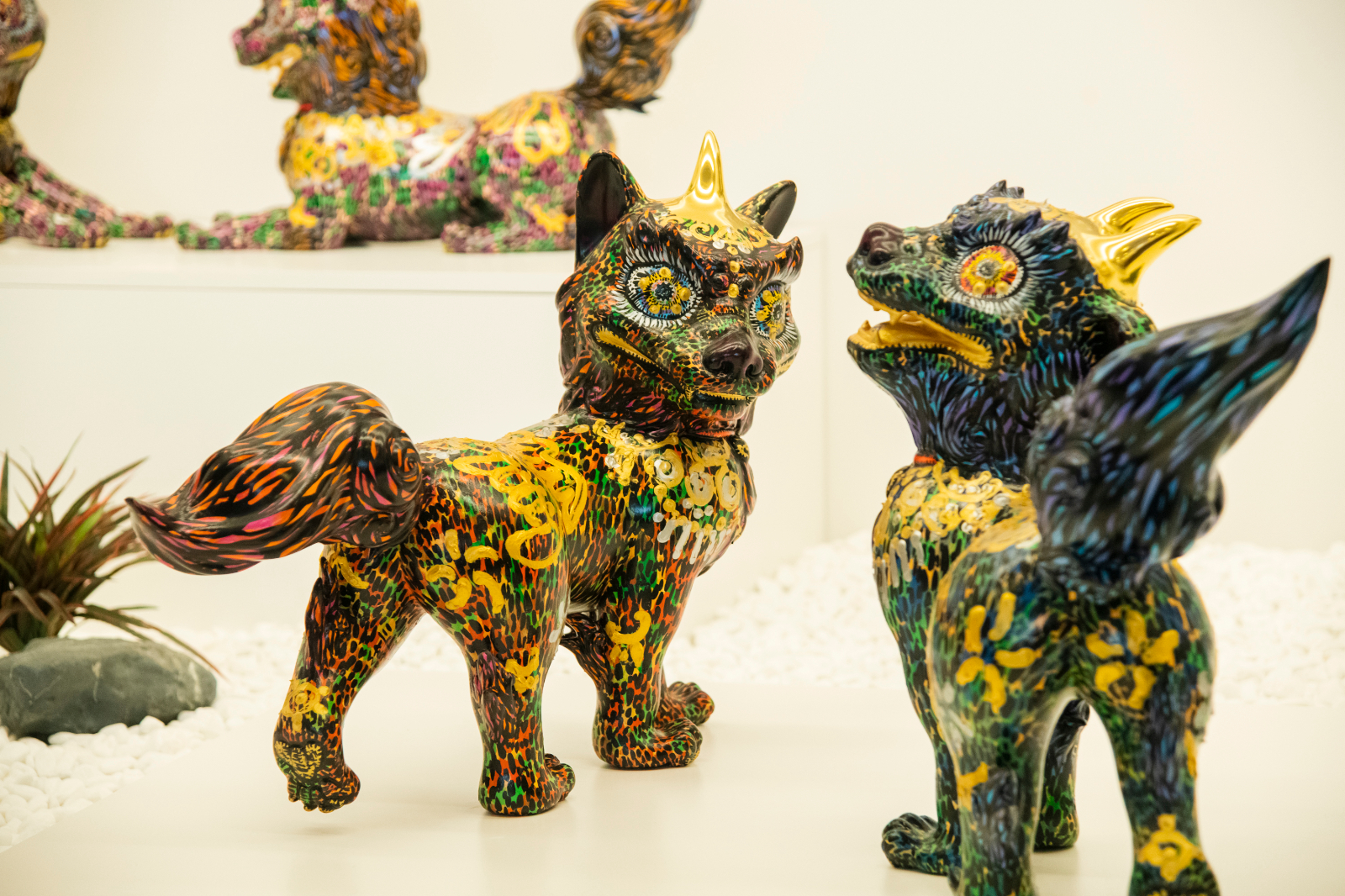
-What kind of feelings are contained in this work?
When all of Japan is *神無月(Kannazuki), only Izumo is *神在月(Kamiarizuki). At that time, the 御神使(Go-shin-shi) that is also called 龍蛇神(Ryu-ja-shin) will receive the eight million Gods entering Izumo from Inasa Beach.
Regardless of our human life cycle, the activities of these gods continue without being caught up in anything. Therefore, I draw pictures with the feeling that “Our life should not forget to pray, no matter how painful it may be, and head toward a great existence.”
*神無月(Kannazuki) means “The month without God”.
神在月(Kamiarizuki) means “The month when God is”.
In Japanese Shintoism, It was believed that all gods would gather at Izumo Taisha Shrine for seven days from October 11th to 17th of the lunar calendar to hold a meeting. So, october is said to be 神在月(Kamiarizuki) in Izumo. Places in Japan other than Izumo are said to be 神無月(Kannazuki).
The theme of "Shin-Fudoki Part 2" is born in Izumo

Ms. Komatsu who produces "Shin-Fudoki Part2" at an old folk house next to 出雲井社(Izumoi-no-yashiro)
―I heard that this work was drawn in an old folk house near Izumo Taisha Shrine.
That’s right. I drew it in an old folk house next to a 摂社(Sessha shrines) called 出雲井社(Izumoi-no-yashiro), which is about a 20-minute walk from Izumo Taisha Shrine. I drew it in about 4 to 5 hours.

―It seems that you have been to the land of Izumo since you created and dedicated “Shin-Fudoki” in 2014. Did you have any new inspiration from Izumo this time?
On this trip, I went to Izumo Taisha immediately from Ise Jingu. Until now, I had visited each place separately, but it was a great experience for me to paint after visiting the two shrines that are connected to each other in Japanese Kojiki and Fudoki.
I got inspired for “Shin Fudoki” eyes in Ise Jingu, while I got the inspiration for its colors in Izumo Taisha. Since I combined them, I haven’t been able to go back to my previous style of painting, and now I’m really not afraid to use colors. I think I was able to reaffirm my own way of going toward the future.
These days society is unfortunately stagnant due to the influence of the COVID-19 pandemic, however the Shinto ritual will continue forever. Thanks to that great energy, I felt that no matter what I had to keep moving forward.
These themes are reflected in “Shin-Fudoki Part 2”. The whole work will be released for the first time on the program, so I hope you can watch it.
Izumo Taisha Shrine, which gave "color" to Ms. Komatsu, who started as a copperplate engraving artist.
.jpg)
―You said that you met “color” in Izumo. What kind of experience was it for you?
When I first formally worshiped at Izumo Taisha Shrine, I saw the light rising from the bottom to the top of Mt. Yakumo. I felt the purity of people’s prayers there, and I thought that it would be possible to express the emotions of those prayers in color.
By putting color on the “God beast” that is between heaven and us, you let him connect the prayer to God and “guide people’s souls in a pure direction.”
If God wants me to draw, I want to fulfill that role

―At the heart of your creation there is always the theme of “prayer.”
I think it is difficult to express and understand the heart of prayer materially, because the soul and human heart cannot be filled with the worldly. We live in a much more convenient time than in the Paleolithic era, yet many people end up getting sick nonetheless.
So what really matters is the immaterial, the spiritual. “Divine spirit(Shinju) ” are immaterial, they are very important in connecting us with things that cannot be regarded as physical.
―What I think you are very special is that, in general, the artist wants to express themselves. However, your theme is to complete your “given role” rather than your own “I” and deliver prayers to the world.
I don’t think I have to put myself out. Rather than drawing because I want to show myself, I feel that I am
just drawing a “god beast”. Also, I think there is the thing like the flow of fate that you can’t control . It’s the area that humans can’t forcibly change. If God wants me to draw, I want to complete that role. Of course, I think that the power of the relationship that everyone around me is connecting with is also great.
Live painting experience at Lazzaretto Vecchio, a major turning point
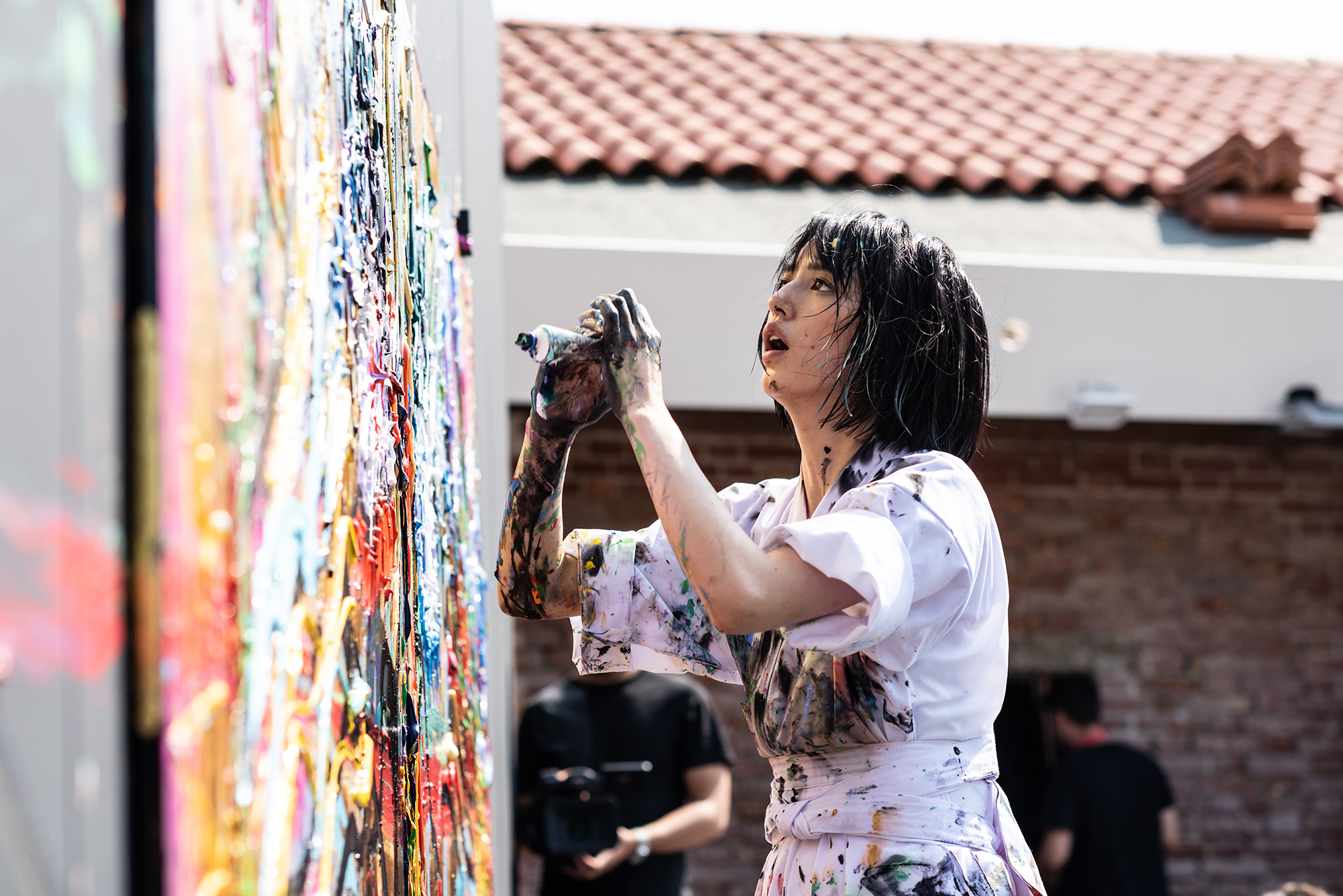
Live painting at Lazzaretto Vecchio, Venice International Film Festival
―Even under the influence of this COVID-19 calamity, you continues to deliver prayer messages.
The experience of live painting at Lazzaretto Vecchio during the 76th Venice International Film Festival 2019 was huge.
It is said that the plague broke out in the 15th and 16th centuries and caused many deaths. It’s an island where plague patients were being isolated at that time. On that island there are still the remains of those people and when I did the live painting, I felt their souls and I couldn’t stop crying. At that time, I realized that my role was to heal them through my live painting.
Six months later, I feel that the start of COVID-19 calamity was a revelation. Mankind has always been in the fight against various plagues, but it has survived. I think that spirituality has become more important in this COVID-19 calamity. Under such circumstances, the experience at Lazzaretto Vecchio was the starting point for continuing to convey the message of prayer while going through this pandemic.
Create a "prayer barrier" by drawing
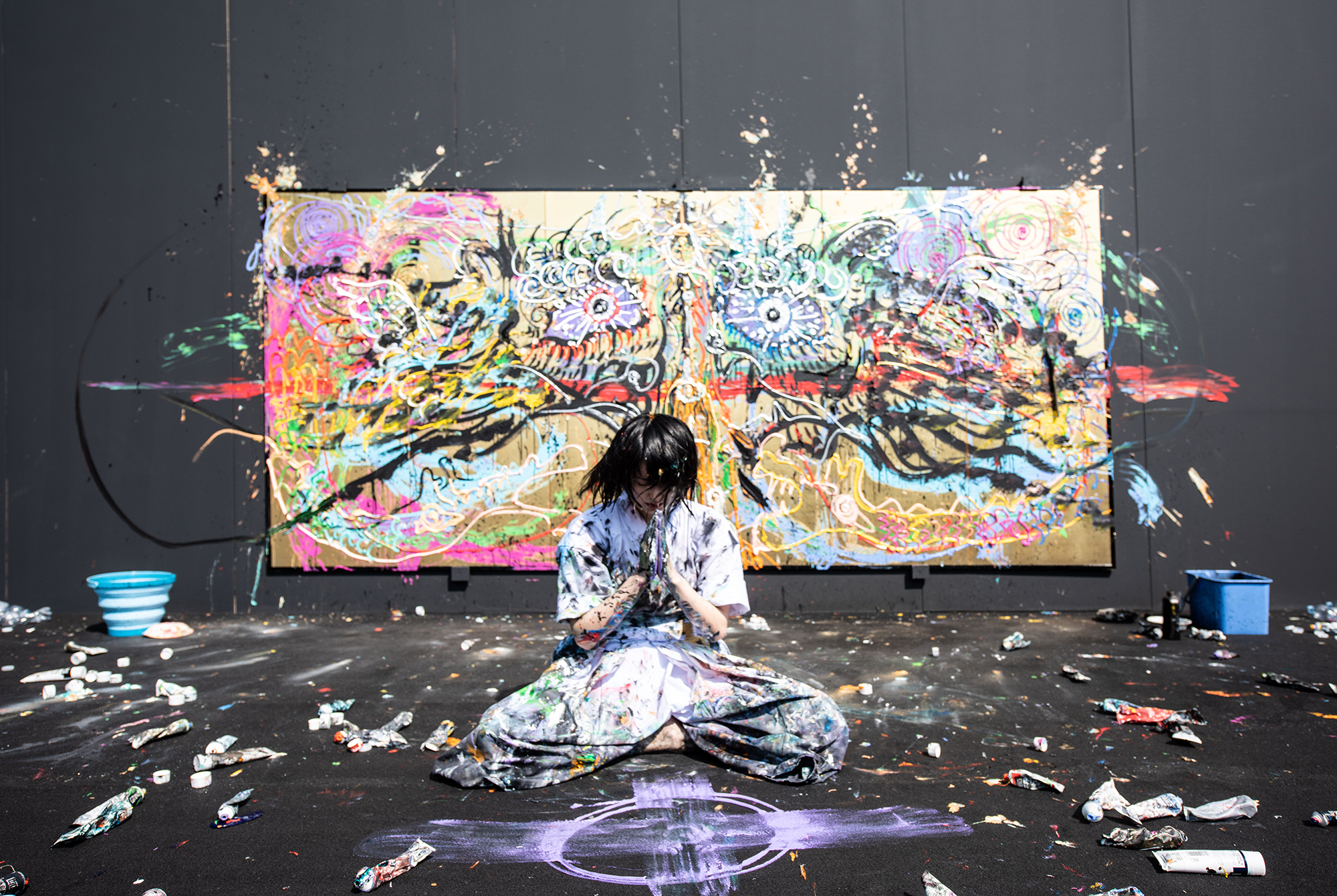
Live paint work "INORI" in Venice
―From your work, I get the impression that you are protecting us by creating a “prayer barrier” on boundaries that must not be crossed.
Thank you very much. In 2020, when I made a charity T-shirt with the concept of “INORI FOR OUR PLANET” on Nippon Television’s “24-hour TV Love Saves the Earth”, I wrote the word “prayer” in the languages of the world. At that time, people said to me “This is a prayer barrier” against evil and I feel that way too.
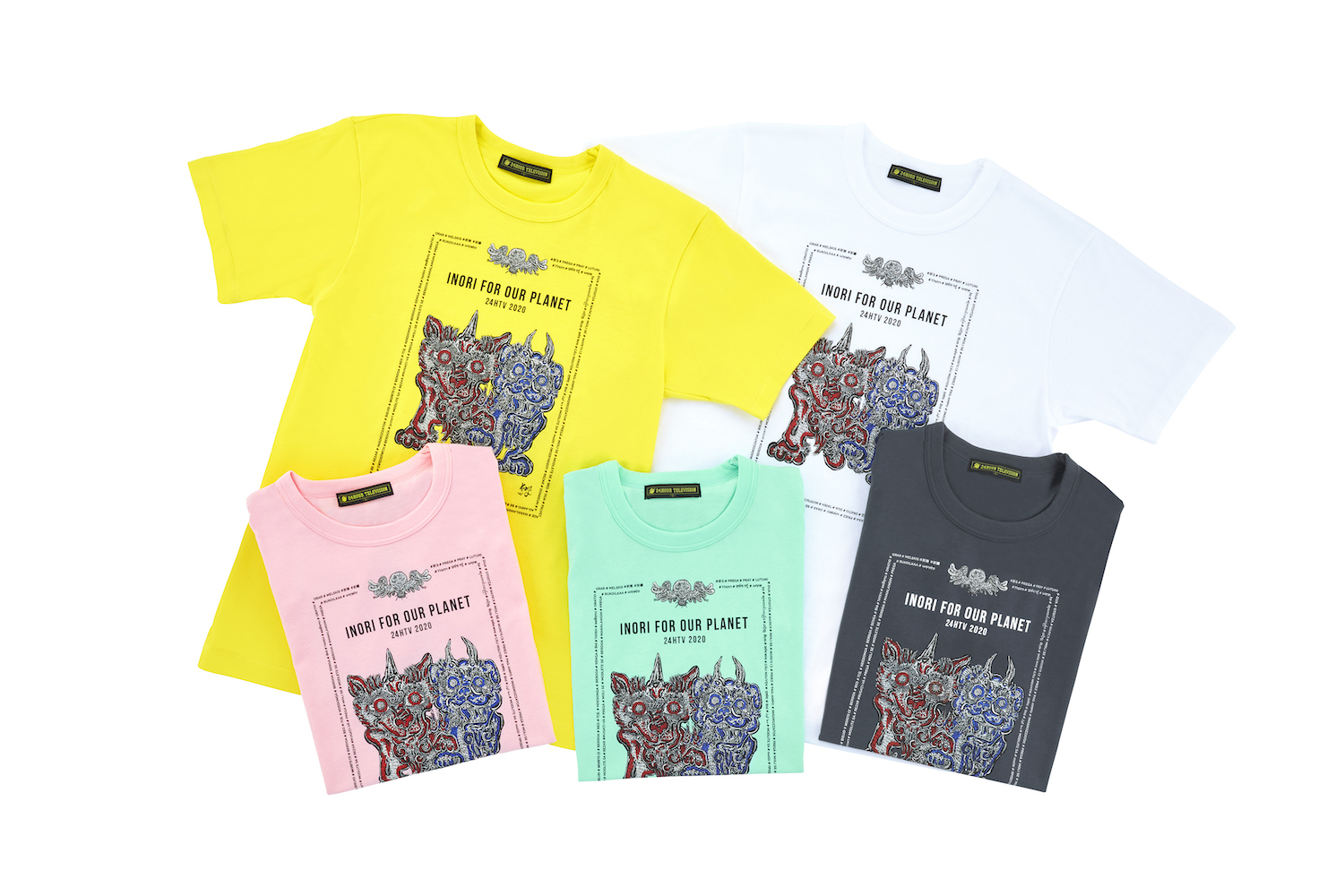
In 2020, she designed a charity T-shirt for the Japanese TV series “24-hour TV Love Saves the Earth” under the concept of "INORI FOR OUR PLANET"
―Indeed, prayer is universal.
I really think that from the moment humans were given intelligence by the Universe and discovered fire and its energy, they joined hands and started praying. In that sense, the origin of my creation is “prayer.”
Finally, Izumo's recommended spots
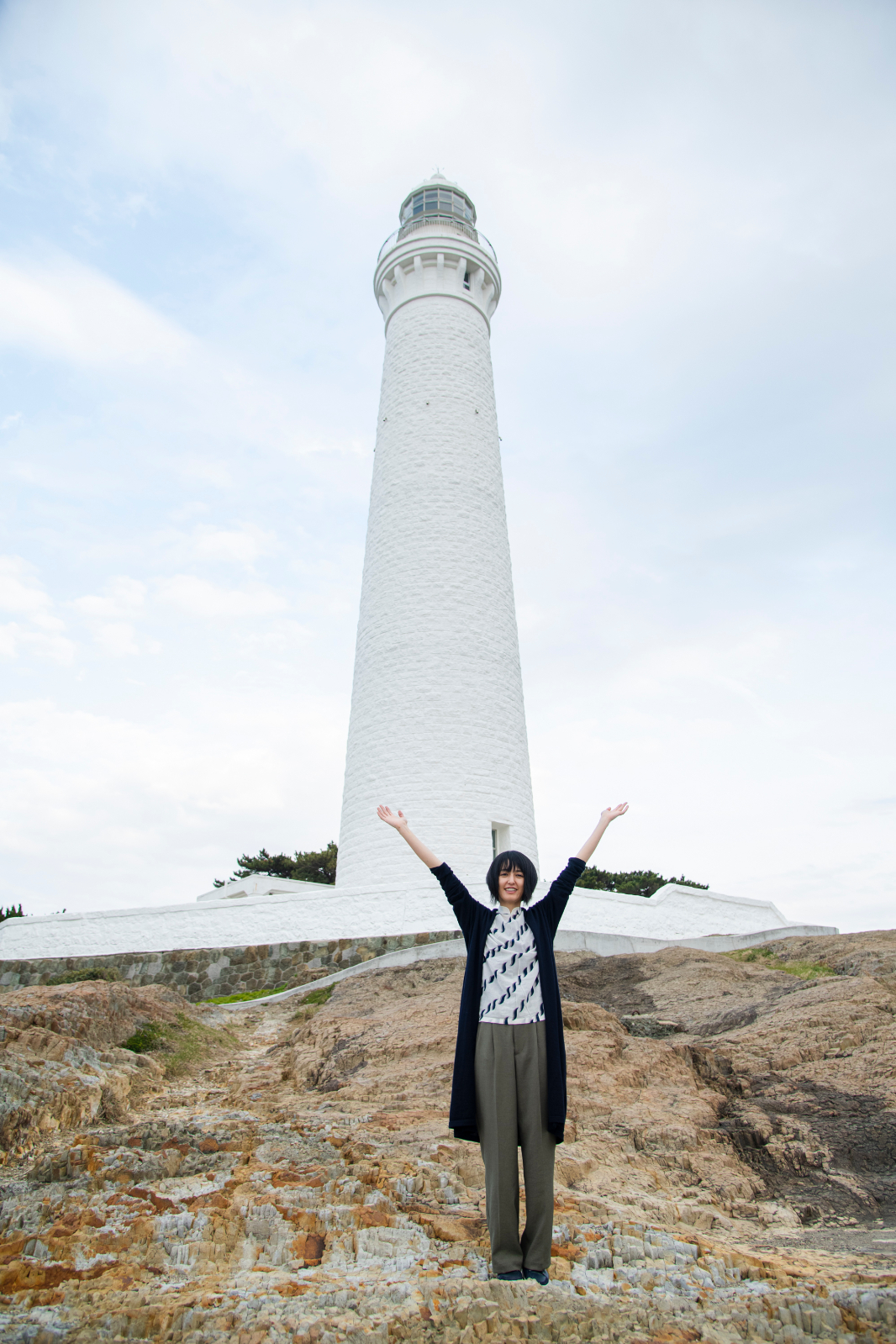
Izumo Hinomisaki Lighthouse and Miwa Komatsu
―Thank you for talking about your creation. It was very interesting and impressive. Also, it seems that there are more recommended places in Izumo!
There are undersea ruins around “経島(Fumishima)” about 100m from 日御碕神社(Hinomisaki Shrine)! If you like diving, I definitely want you to go. The shrine of that time is sleeping on the seabed, and the gravel is laid properly. The depth is about 20m, but the instructor can easily dive you there.
隠岐の島(Okinoshima), which is registered in the Oki Islands as UNESCO Global Geopark, is also recommended, although it will be a little far away. There are many shrines and archaeological sites, and I was impressed by the ancient people of Izumo. You can see cows and horses grazing. Rabbits that are said to have been the origin of “Inaba’s White Rabbit” are also on the island.

The Sea of Japan seen from Izumo Hinomisaki. There are undersea ruins (shrines) in this sea.
―Izumo feels like the original scenery of Japan.
I agree. I think that many people go to Ise Jingu as a set with Kumano and Mt. Koya, but Izumo is a destination difficult to reach by public transportation. The Shinkansen doesn’t go there either.
But its inconvenience is also its advantage. Izumo’s charm may be that this place is protected because it is inconvenient, and modern society does not come in here very much. I would like you to visit Izumo, where you can still feel its ancient atmosphere!
< HYAKKEI Editor’s note >
Ms. Komatsu answered sincerely about her beliefs and concepts regarding her creation. She answered about her love for Izumo so naturally, I couldn’t believe that such an amazing artist who is capable of moving massive audiences around the world, could be so passionate and open with me about her love for this wonderful place.
Her message of “prayer” and “playing a given role” may be a universal message that resonates with people living in modern society who are tired of pursuing only material fulfillment.What kind of work will she create in the future after this production? And will it create excitement and salvation all over the world? At HYAKKEI, I would like to continue to follow her success.
><Exclusive interview with Miwa Komatsu> -Part1- A trip to Izumo with Miwa Komatsu
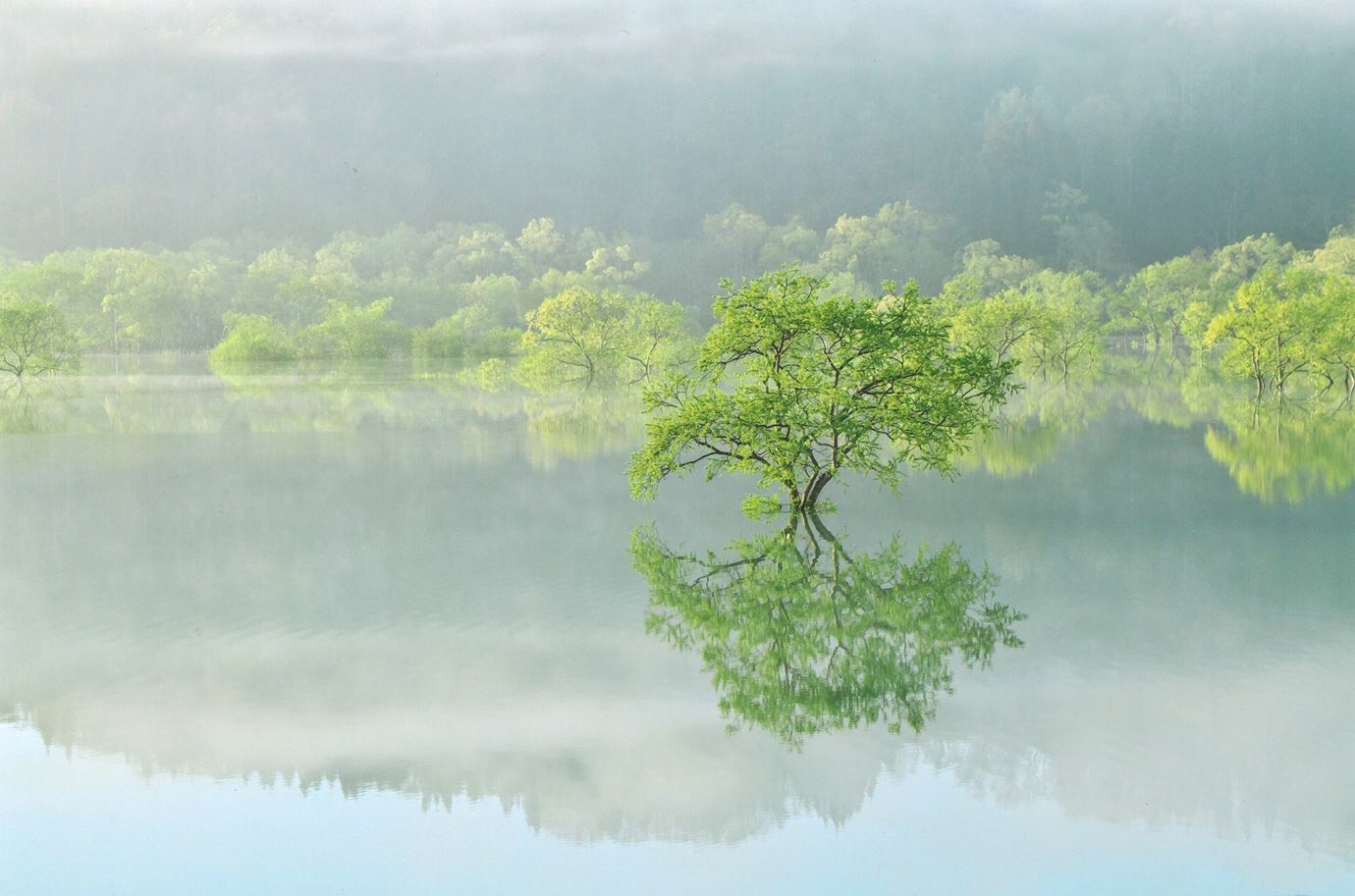





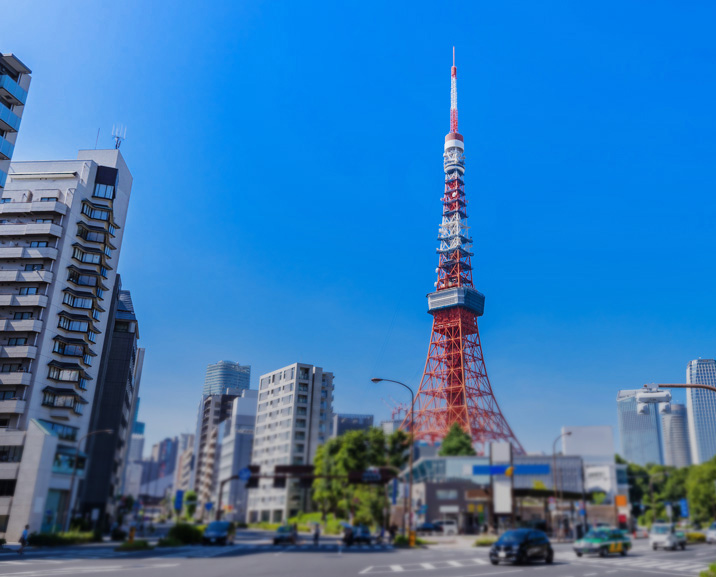
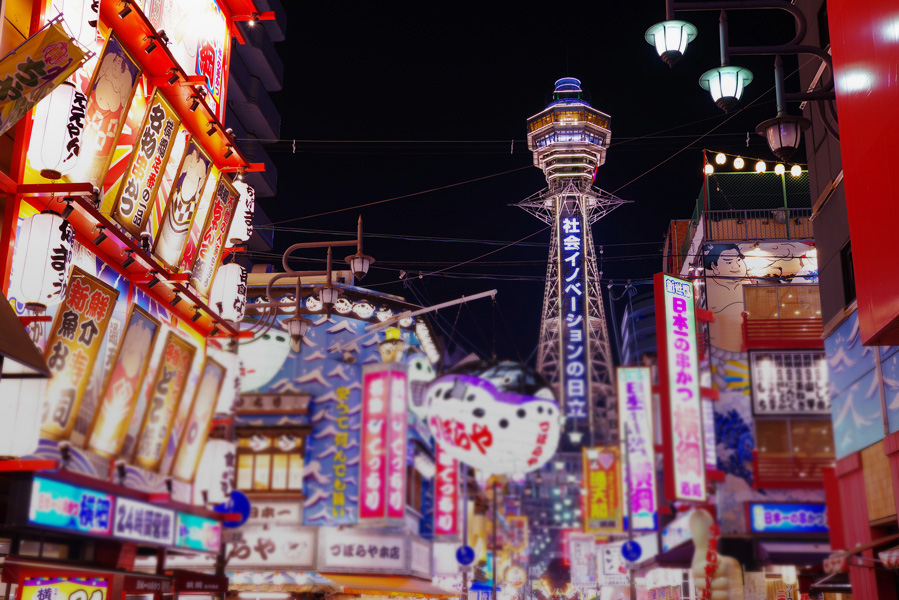
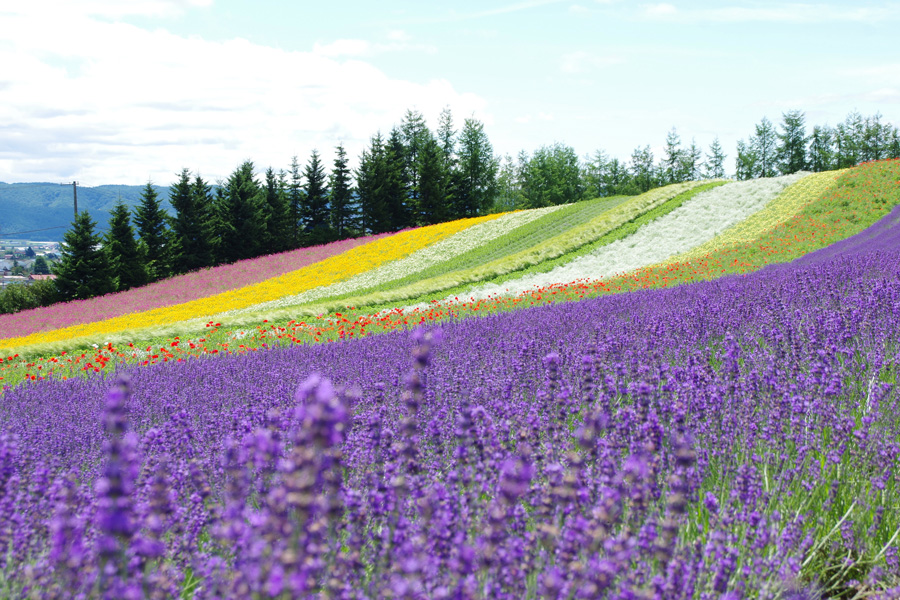
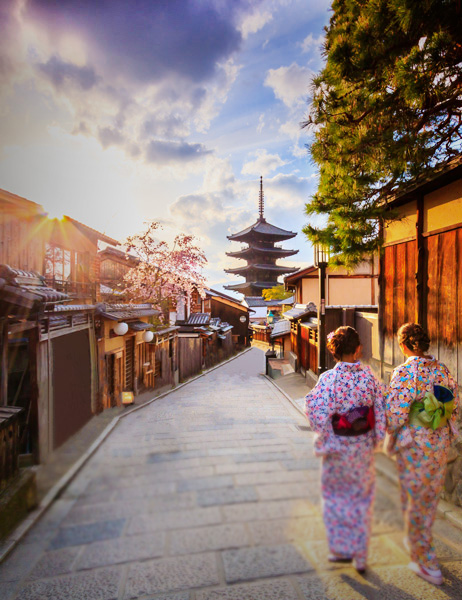

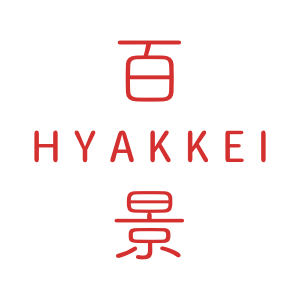
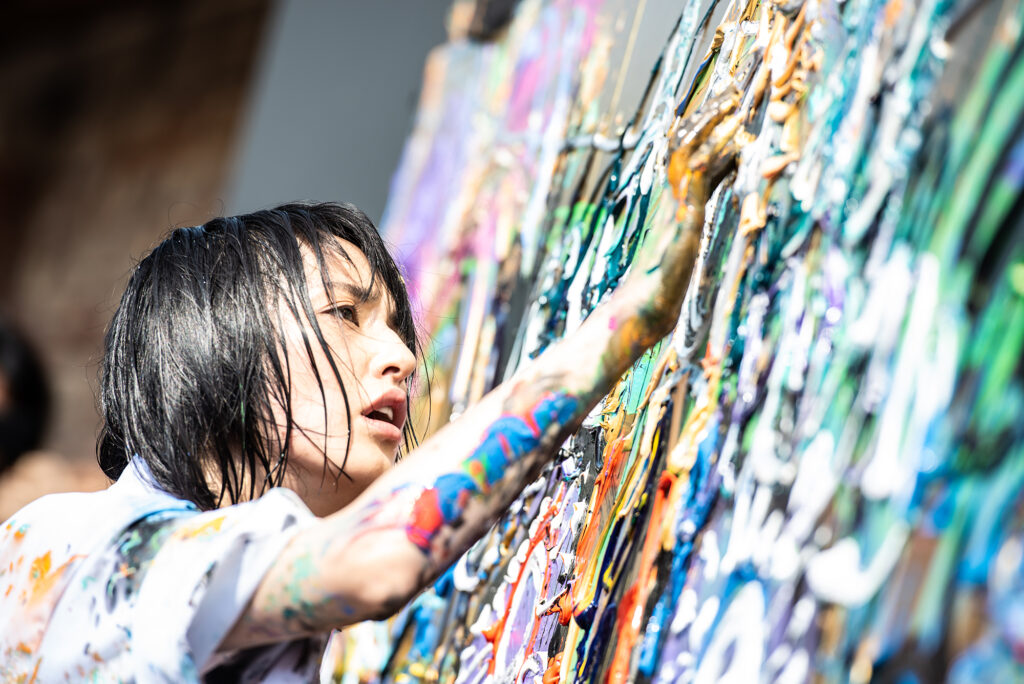






.jpg)










